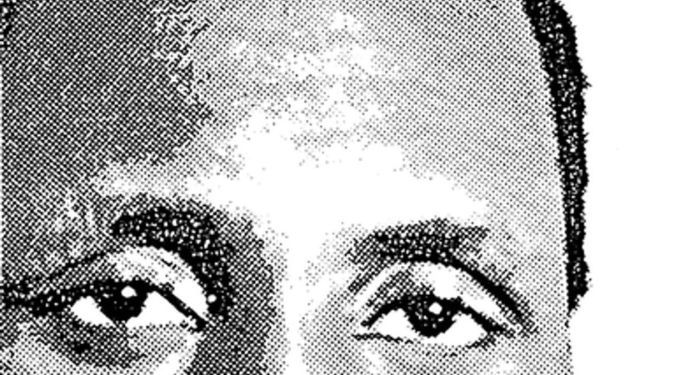I was in high school when I first read Patty Hearst’s memoir, Every Secret Thing, in which she recounts the nightmare of being kidnapped by a group of urban guerrillas and coerced to join their cell. For a year and a half, Hearst committed a series of crimes with the Symbionese Liberation Army before being arrested and convicted for bank robbery. Reading this as a suburban teenager, my reaction was: God, if only something that exciting would happen to me.
With age, I understood this experience was actually a horrific trauma for Hearst, but I remained fascinated by the prosecution’s portrayal of her as a “rebel in search of a cause.” That fictional girl served as the inspiration for Séverine Guimard, the seventeen-year-old protagonist of my novel The Bombshell.
Séverine is the daughter of a French politician who’s been assigned to the Mediterranean island of Corsica. Lonely and bored, Séverine dreams of running away to Hollywood and making it big as an actress. Then one night, a trio of radical Corsican separatists throw her in the trunk of their rental car and abscond to a safe house in the island’s remote interior. When ransom negotiations fall through, they find themselves stuck with their headstrong hostage. They start Séverine on a diet of revolutionary thinkers, and it’s not long before she begins to sympathize with the group’s cause and see a shortcut to stardom. She decides to join the cell, and what follows is a summer of romantic entanglement, a media frenzy, and a near-revolution.
Séverine may fancy herself a budding intellectual, but she’s more impulsive than cautious, which creates conflict with her comrades. “You act like it’s so hard to change anything,” she reproaches the men, and indeed, inciting change seems easy for her, at least initially. Like Séverine, the women in these seven novels don’t resign themselves to injustice, desperation, inattention, or boredom—they change their circumstances. So what if their methods are technically illegal?
The Bandit Queens by Parini Shroff
For a novel about spousal abuse, the Indian caste system, misogyny, and mariticide, The Bandit Queens is surprisingly delightful. Geeta’s abusive, alcoholic husband left her five years ago, but rumor has it she killed him. She’s never bothered to set the record straight, which becomes an issue when the women in her microloan group start approaching her to kill their own no-good husbands.
If the men in this novel are mostly straightforward villains (you won’t feel guilty rooting for their demise), the women’s friendships are refreshingly nuanced. “Women splayed the far corners, their cruelty and kindness equally capacious.” They’re not above sisterly bickering, manipulation, or even blackmail, but when men threaten the safety of the most vulnerable members of the village, they’re there to support—and kill for—each other.
You’ll Never Believe Me by Kari Ferrell
Millennials will remember Gawker’s relentless coverage of the “Hipster Grifter” Kari Ferrell, a scammer who predated Anna Delvey and The Tinder Swindler. Fifteen years after serving time for cashing bad checks, Ferrell has published an endearingly crass and self-aware memoir that oozes charisma; when she receives her prison-issued ID and first sees her mugshot, she muses: “It was a good hair day and the locks framing my face were giving off angelic cool-girl vibes. Was this… was this the best photo of me ever taken? I wondered if I’d be able to buy a higher-res print (I could and did!), because even in arresting times my vanity couldn’t be silenced.”
It’s not only a very funny, juicy account of her criminal escapades, but a deeply humane portrayal of her fellow incarcerated women and Ferrell’s journey coming to terms with her transracial adoption.
Morvern Callar by Alan Warner
Twenty-one-year-old Morvern wakes one morning to find her boyfriend has committed suicide in their apartment. So what does she do? Tells everyone he’s left town, disposes of the body, and uses his bank card to book a Spanish holiday for her and her bestie. But the real crime is that she prints out her boyfriend’s unpublished novel—his only legacy, which he entrusts to her in his suicide note—and submits it to publishers having changed the name on the cover to her own.
Yet there’s an ingenuousness to Morvern that endears you to her, even as she’s chopping up her boyfriend’s decomposing corpse. The novel isn’t particularly interested in explaining why Morvern does what she does, only showing you how she copes with her hardscrabble life—by insisting on pleasure by any means necessary.
A Prayer for Travelers by Ruchika Tomar
The plot seems simple enough: Two friends, Penny and Cale. Penny goes missing, Cale looks for her. But this novel is a labyrinth, and as you wend your way through the out of order chapters, bumping into hangman’s puzzles and images of tarot cards and serpents, the book itself begins to feel like an occult object. The crimes committed are far from the most unsettling thing about this story; a sense of disquiet pervades even the most anodyne interactions, and you realize there is nothing simple about these girls’ friendship, their desert town, and the reasons someone might disappear from there.
As quiet, bookish Cale searches for Penny, she encounters the dark sides of the people in town, including Penny herself. However, coming into contact with that darkness doesn’t merely destabilize Cale—in a twisted complication of the coming-of-age narrative, it empowers her.
Five Little Pigs by Agatha Christie
Plenty of Agatha Christie’s novels involve a murderess, but in this Poirot mystery, not one but three women are suspected in the poisoning of painter Amayas Crale. His wife took the fall sixteen years ago, but before her death, she sent her daughter a letter avowing her innocence. The daughter appeals to Poirot to solve the cold case, and he narrows it down to five suspects, including Crale’s teenage sister-in-law, his young muse, and the governess. I won’t spoil this 80-year-old novel, but its inclusion on this list might give you a hint…
While writing The Bombshell, I often returned to this meditation on youth from Poirot as he contemplates Crale’s final painting, of his twenty-year-old lover: “What do most people mean when they say that? ‘So young.’ Something innocent; something appealing, something helpless. But youth is not that! Youth is crude, youth is strong, youth is powerful—yes, and cruel! And one thing more—youth is vulnerable.”
Fatale by Jean-Patrick Manchette
A woman using the alias Aimée Joubert travels throughout France offering her services to men who want other men dead. Not quite a hitwoman, not quite a conwoman, she kills for love of the game and of money. However, when she arrives in a new town that’s rife with corruption, she begins to develop a conscience—although it may be too little, too late.
As with Morvern Callar, the reader can only guess what Aimée’s thinking or feeling through her spare dialogue and actions, which are sociopathic in both their dispassion and unpredictability. Many “killer women” narratives justify their heroines’ murderous tendencies, but Fatale is glaringly lacking in morality. “SENSUAL WOMEN, PHILOSOPHICALLY MINDED WOMEN, IT IS TO YOU THAT I ADDRESS MYSELF.” So concludes this stylish, cinematic polar, a sentence that acts as a Rorschach test. Is it a warning to women who find themselves seduced by Aimée’s story? Or a call to action?
Vida by Marge Piercy
Vida Asch spent the late 1960s bombing corporate and government buildings with the Little Red Wagon collective, a Weather Underground-esque group that was supposed to bring about an age of peace and equality—but ten years later, she’s living an oft-monotonous, oft-stressful life underground, at the mercy of her dwindling network’s generosity.
She’s paranoid about being recognized—even a tampon run to the pharmacy must be strategized—although her new, much younger boyfriend believes she’s “living in a spy movie that’s over.” Is Vida’s cautiousness outdated, symptomatic of an outsized ego? Or is she correct to think the feds are still after her?
Vida is a realistic portrayal of a woman who dedicated her life to changing the world, yet as she ages, she finds the world moving on without her, in the wrong direction. It’s not a hopeless narrative, however; there’s still the occasional bubble bath, lover, glass of good wine, and glimmer of faith that her sacrifice was not made in vain.
The post 7 Books About Girls Doing Crime appeared first on Electric Literature.














 Bengali (Bangladesh) ·
Bengali (Bangladesh) ·  English (United States) ·
English (United States) ·